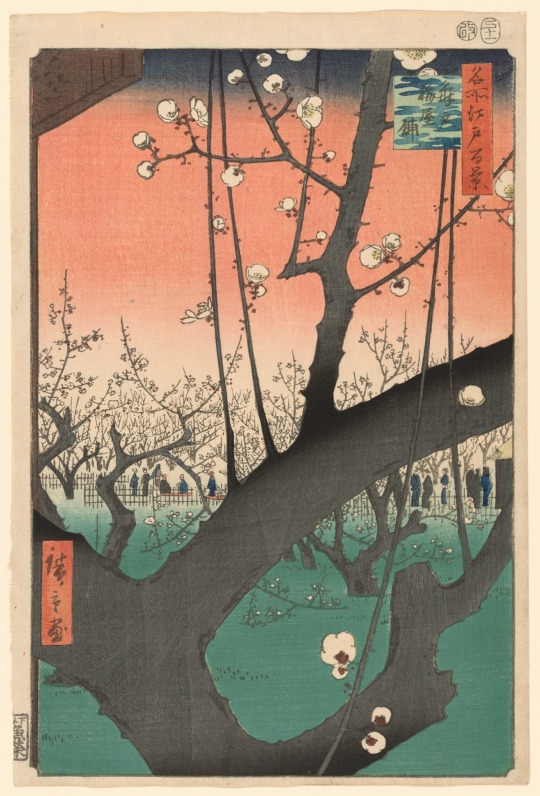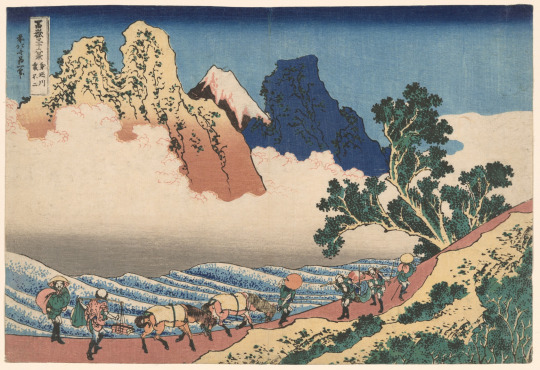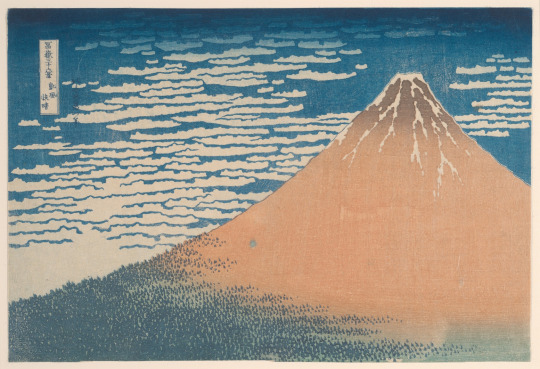#Kameido (Kameido Umeyashiki)
Explore tagged Tumblr posts
Text
Utagawa Hiroshige
Japanese, 1797–1858
Plum Estate,
Kameido (Kameido Umeyashiki),
no. 30 from 100 Famous Views of Edo, 11th month of 1857,
woodblock print,
14 3/16 × 9 1/4 in.
36 × 23.5 cm.
Brooklyn Museum

#utagawa hiroshige#artist painter#Japanese 1797–1858#original art#japanese artist painter#woodblock print#Plum Estate#Kameido (Kameido Umeyashiki)#Brooklyn Museum#art#sai aeko#huyiro raiko#xpuigc
10 notes
·
View notes
Text


Left: Hiroshige Utagawa, Plum Park in Kameido (亀戶梅屋 Al, Kameido Umeyashiki), 1857
Right: Vincent Van Gogh, Flowering Plum Orchard (after Hiroshige) 1887
#utagawa hiroshige#vincent van gogh#van gogh#japanese prints#woodblock print#japanese art#modern art#art history#post impressionst#post impressionist painter#post impressionism#post impressionist art#aesthetictumblr#tumblraesthetic#tumblrpic#tumblrpictures#tumblr art#asian art#dutch art#dutch painter#japanese woodblock print#aesthetic#beauty
28 notes
·
View notes
Text

Utagawa Hiroshige, “Yamashiro Province: The Togetsu Bridge in Mount Arashi (Yamashiro, Arashiyama Togetsukyo),” from the series Famous Places in the Sixty-Odd Provinces (Rokujuyoshu meisho zue), 1853

Utagawa Hiroshige, “Plum Garden at Kameido (Kameido Umeyashiki),” from the series One Hundred Famous Views of Edo (Meisho Edo hyakkei)

Utagawa Hiroshige, “Awa Province: Naruto Whirlpools (Awa, Naruto no fuha),” from the series Famous Places in the Sixty-odd Provinces (Rokujuyoshu meisho zue), 1855

Katsushika Hokusai, “The Back of Mount Fuji Seen from Minobu River (Minobugawa Urafuji),” from the series Thirty-Six Views of Mount Fuji (Fugaku sanjūrokkei), about 1830/33

Katsushika Hokusai, “Amida Falls in the Far Reaches of the Kisokaido (Kisoji no oku Amidagataki),” from the series A Tour of Waterfalls in Various Provinces (Shokoku taki meguri)

Katsushika Hokusai, “A Mild Breeze on a Fine Day (Gaifu kaisei),” from the series Thirty-six Views of Mount Fuji (Fugaku sanjurokkei), c. 1830/33

Katsushika Hokusai, “Kirifuri Falls at Mount Kurokami in Shimotsuke Province (Shimotsuke Kurokamiyama Kirifuri no taki),” from the series A Tour of Waterfalls in Various Provinces (Shokoku taki meguri), c. 1833
Source
7 notes
·
View notes
Photo

Utagawa Hiroshige
One Hundred Famous Views of Edo Meisho Edo hyakkei 名所江戸百景
Date: 1856-58
#30
Plum Estate, Kameido (Kameido Umeyashiki) 亀戸梅屋舗
6 notes
·
View notes
Photo

Utagawa Hiroshige II - Plum Garden at Kameido (Kameido Umeyashiki), color woodblock print from the series Famous Places in Edo (Edo meisho), 1859
49 notes
·
View notes
Photo

Plum Garden at Kameido (Kameido Umeyashiki), from the series "One Hundred Famous Views of Edo (Meisho Edo hyakkei)", Utagawa Hiroshige, 1857, Art Institute of Chicago: Asian Art
Frederick W. Gookin Collection Size: 36. x 24.1 cm (14 3/16 x 9 1/2 in.) Medium: Color woodblock print; oban
https://www.artic.edu/artworks/34046/
7 notes
·
View notes
Text

“In my own life I well know how hard it is for me to trust that I am loved, and to trust that the intimacy I most crave is there for me. I most often live as if I have to earn love, do something noteworthy, and then perhaps I might get something in return. This attitude touches the whole question of what is called in the spiritual life, the 'first love.' Do I really believe that I am loved first, independent of what I do or what I accomplish? This is an important question because as long as I think that what I most need I have to earn, deserve and collect by hard work, I will never get what I most need and desire, which is a love that cannot be earned, but that is freely given.
Thus, my return is my willingness to renounce such thoughts and to choose to live more and more from my true identity as a cherished child of God."
~ Henri Nouwen
[Utagawa Hiroshige (Ando) (Japanese, 1797-1858). Plum Estate, Kameido (Kameido Umeyashiki), No. 30 from One Hundred Famous Views of Edo, 11th month of 1857]
#hiroshige #children #henrinouwen #love #beloved #intimacy #identity #god #mercy #trust
6 notes
·
View notes
Text

Utagawa Hiroshige I (1797–1858) —
Plum Estate, Kameido (Kameido umeyashiki), from the series One Hundred Famous Views of Edo (Meisho Edo hyakkei)
「名所江戸百景 亀戸梅屋敷」, 1857
#utagawa hiroshige#hiroshige#art#japan#spring#japanese garden#plum garden#plum blossom#japanese art#ukiyoe#flowers
598 notes
·
View notes
Text
Sono delicate note che suonano nei miei giorni più grigi
Angeli di fango col volto da cherubini
In fila con gli affranti io ne porto le effigi
E salto nella città allagata come Sonnellini
Fra orologi d'oro e anime da manichini
Necrologi, sentimenti, strade, cicatrici
Facce rievocate dal fumo sugli edifici
Solitario come lungo i viali di vecchia Parigi
Oggi la memoria torna e si trasforma nella peggio gogna
Un mezzo morto sogna che il sole lo impicchi
Una colonna di insuccessi che adorna le vesti
Di chi ha il cuore in una fogna e aspetta che il tempo conficchi
La sua lama fredda poi il silenzio fra i deliri
Pioggia e whisky dove prima crescevano gli iris
Fiamme spente, candele, respiri
E il cielo si fa rosa, Kameido Umeyashiki
1 note
·
View note
Text

This is another piece of art by Utagawa Hiroshigh, from the series 100 famous views of Edo. This picture is called Plum Garden at kameido (Kameido umeyashiki). I love the contrast of colours in this picture. But with a little resrch this picture is more interesting according to Brooklyn museums webpage “Hiroshige brings us face to face with the celebrated "Sleeping Dragon Plum" of Kameido. This tree, the most famous in Edo, was known for the purity of its double blossoms, which, according to one Edo guidebook, were "so white when full in bloom as to drive off the darkness." This inspired me to not just look at the appearance of art but the meaning behind it or the hidden story that inspired it!!
0 notes
Text
Inspirational art: Plum Estate, Kameido (Kameido Umeyashiki), No. 30 - Utagawa Hiroshige
Sharing the most inspirational art I can find on the web! Title: Plum Estate, Kameido (Kameido Umeyashiki), No. 30 from “One Hundred Famous Views of Edo” Date: 11th month of 1857 Location: Japan Artist: Utagawa Hiroshige (1797-1858) Type of art: woodblock print Note: This a view of the the “Sleeping Dragon Plum,” which took its name from the way its branches looped across the ground. The…

View On WordPress
0 notes
Photo

Utagawa Hiroshige I (1797–1858) —
The Plum Garden at Kameido in Full Bloom (Kameido umeyashiki sakari no zu), from an untitled series of views of Edo
江戸名所 「亀戸梅屋敷盛之図」
0 notes
Photo

Utagawa Hiroshige (歌川広重) (Japanese, 1797-1858), Plum Garden at Kameido (亀戸梅屋舗, Kameido Umeyashiki) No. 30 from One Hundred Famous Views of Edo, published in the 11th of 1857 Edo Period, Ansei Era Woodblock print, 36 x 23,5 cm (sheet) 34 x 22,6 cm (image) Brooklyn Museum, New York, NY, USA
0 notes
Text
[su_label type=”info”]Utagawa Kunisada(1786-1865)[/su_label]
Utagawa Kunisada(歌川国貞) was the one of the most popular ukiyo-e artists at the end of the Tokugawa period as well as Utagawa Kuniyoshi(歌川国芳), among the disciples of the first Toyokuni(豊国). In contrast to his younger disciple, he was a serious person and always neatly dressed.
[su_label type=”black”]Maximum number of works in all of the ukiyo-e artists[/su_label]
He was born as a son of a timber wholesaler who run a ferry. But he already began to study painting under Toyokuni in the mid-teens. And he published the first Nishiki-e at the age of 19.
His talent bloomed at his young age. He sent Yakusha-e(kabuki actors portrait) and bijin-e(beautiful women portrait) one after another to the world.
In 1812 he started drawing the picture yakusha-e’s Ookubi-e(the picture of the upper half of the body) series, “Kabuki Actor Puzzle”(役者はんじもの, Yakusha hanjimono) and “BigHit Kyogen”(大当狂言之内, Ooatari kyougen no uchi). He used mica powder for coloring the background.
Among the bijin-e he created, “Modern Vanity Mirror”(今風化粧鏡, Imafu keshokagami) and “Nowadays Twenty-Three Women”(当世三十弐相, Tosei sanjunisou) are representative. He portrayed the women of Edo with great expression.
He also worked on drawing illustrations for Gokan(picture books in Edo Period) including “Imposter Murasaki and Bumpkin Genji”(偐紫田舎源氏, Nise Murasaki inaka Genji).
Kunisada declared himself the second Toyokuni in 1844, but in fact Toyoshige had already inherited the name. But he even so didn’t admit it and continued to insist that he was the second. Unfortunately for him, the researchers recognize him as the third Toyokuni.
As a Ukiyoe painter who painted more pictures than anyone, he gradually loses the quality of his work in his later years, but he led the world of ukiyo-e with Hiroshige(広重) and Kuniyoshi as one of Utagawa School.
[su_divider text=”To the top of the page”] [/su_divider]
[su_label type=”black”]Garalley[/su_label]
[su_label type=”success”]strip picture[/su_label]
Fashionable Man Entertained in a House of Pleasure by Wikimedia(click to see in full size)
Picture of a Crowded Theater Hosting Performance of Sugawara Denju Tenarai Kagami by Wikimedia(click to see in full size)
Courtesans in a Peony Garden by Wikimedia(click to see in full size)
Courtesans with Children by Wikimedia(click to see in full size)
The Ascendence of a Modern Day Genji(click to see in full size)
[su_divider text=”To the top of the page”] [/su_divider]
[su_label type=”success”]Ookubi-e[/su_label]
Hatsuhana at Hakone by Wikimedia
Ono no Tofu
Kanbei’s wife Okaru and Ichimonziya Saibei from the Play Chūshingura
Hanaya Tokubei Before Kiura Shingo and Ofusa before lady’s maid Fusano
The Restaurant Kiyomizuro, Sakurada Daichi, Kiyomizu; The Role Kiyomizu Seigen in the Play Isshin Futakawa Shiramichi
Ariharano Tokihira and Matsuo Maru
Hayano Kanpei and the Farmer Yoichi
The Actor Bandō Hikosaburō III as Kitsugi Magoemon and the Station Inamura between Yoshida and Goyū
The Actor Bandō Hikosaburō V as the Wrestler Onigatake
Umeo Maru and Sakura Maru
Two Actors portraying wrestlers: (upper) actor Ichikawa Ebizo (Danjūrō VII) as Tetsugatake (lower) Iwakawa
Ichikawa Danzō V in the Role of Kakibenosuke: Yūi by Wikimedia
[su_divider text=”To the top of the page”] [/su_divider]
[su_label type=”success”]”Thirty-Six Fun Proud Things in Edo”(江戸自慢三十六興) series[/su_label]
Autum leaves of Kaianji Temple by National Diet Library
The pottery of Imaido by National Diet Library
Snowing Hashiba by National Diet Library
Shell gathering at Susaki by National Diet Library
Horikiri Iris Garden by National Diet Library
Zojoji’s big bell by National Diet Library
The year‐end fair at Asakusa by National Diet Library
by National Diet Library
The bamboo rake, the special product of Hinoto Tori by National Diet Library
Throwing earthenware at Asukayama by National Diet Library
The peak of blooming at Toeizan by National Diet Library
by National Diet Library
by National Diet Library
Meguro Gyoninzaka Slope and Mt,Fuji by National Diet Library
Akabane Hinomi by National Diet Library
The cherry blossom at new Yoshiwara Nakanomachi by National Diet Library
Hearing the voice of insects at Dokanyama by National Diet Library
The debue at Saruwakagai by National Diet Library
Megurofudo Shrine, New Year’s decoration of willow by National Diet Library
Agatoyama the minister of Bishamon by National Diet Library
Shiba shinmei Shrine’s marcket by National Diet Library
Mukojima’s cherry blossom and Sakuramochi rice cake by National Diet Library
Children at the Sannou Festival, Hiyoshi by National Diet Library
First Horse Day festival at Oji Inari Shrine by National Diet Library
Ryogoku fireflower festival by National Diet Library
Umeyashiki and liquar-pickled plum by National Diet Library
Teppousu Inari Shrine, vewing Mt.Fuji by National Diet Library
New Year’s visiting for Kameido Shrine by National Diet Library
The sixteenth night of a lunar month at Takanawa by National Diet Library
The peony garden of Fukagawa Hachiman Shrine by National Diet Library
[su_divider text=”To the top of the page”] [/su_divider]
Utagawa Kunisada(the thrird Toyokuni), the prolific artist Utagawa Kunisada(1786-1865) Utagawa Kunisada(歌川国貞) was the one of the most popular ukiyo-e artists at the end of the Tokugawa period as well as Utagawa Kuniyoshi(歌川国芳), among the disciples of the first Toyokuni(豊国).
#beautiful women portrait#kabuki actor portrait#ukiyoe#Utagawa School#Utagawa Toyokuni#woodblock printings
0 notes
Photo

Plum Garden at Kameido (Kameido Umeyashiki), from the series "One Hundred Famous Views of Edo (Meisho Edo hyakkei)", Utagawa Hiroshige, 1856, Art Institute of Chicago: Asian Art
Clarence Buckingham Collection Size: 36 x 24.4 cm (14 3/16 x 9 9/16 in.) Medium: Color woodblock print; oban
https://www.artic.edu/artworks/26577/
6 notes
·
View notes
Photo

Plum Garden at Kameido (Kameido Umeyashiki), from the series "One Hundred Famous Views of Edo (Meisho Edo hyakkei)", Utagawa Hiroshige, 1857, Art Institute of Chicago: Asian Art
Gift of Mr. and Mrs. Harold G. Henderson Size: 34.9 x 23.9 cm (13 3/4 x 9 7/16 in.) Medium: Color woodblock print; oban
https://www.artic.edu/artworks/150278/
8 notes
·
View notes